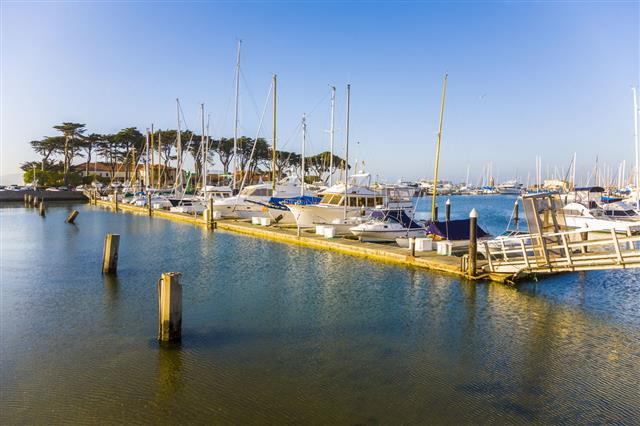
A person who works at the docks or the shipyard is called a longshoreman. In the article below, you will read how to become a longshoreman.
Goods and commodities are transported around the globe by means of planes, ships, and trains. Every mode of transport has a landing and an unloading area, where the assigned workers and other staff are employed. When ships dock at the port, they go through a variety of procedures before they are ready to be unloaded and loaded. The workers who are employed at these places are called longshoremen. Their main duty is to load and unload the cargo, have it move through the different processes, and send it where necessary. In the paragraphs below, you will find the steps to become a longshoreman, the job description, requirements, etc.
- This job involves loading and unloading cargo of different sizes and weights.
- It involves working with equipment such as cranes, containers, tractors, and other machinery. Therefore, the candidate applying for this job has to be in peak physical condition to perform well.
- Good coordination skills, presence of mind, the ability to work quickly and efficiently, and a certain degree of agility to meet deadlines are necessary.
- This job does not need an official degree; however, you will need to equip yourself with extensive knowledge of the shipping industry.
- You will need to be proficient in the required terminology and lingo so that you can present yourself professionally to prospective employers.
- If you want to work for a particular company, learn about their history and prepare yourself to meet their needs.
- The TWIC (Transportation Worker Identification Credential) is a certification administered in the United States by the Transportation Security Administration.
- It is a common credential that is used by anyone who needs to have access to secure Marine Security Transportation Act (MTSA) areas.
- To start working in this field, you will require this certification. In order to do so, schedule an appointment with the TSA. Remember to bring all your identifying documents.
- You will have to fill out a questionnaire, pay a fee, and have both your fingerprints and pictures taken, after which you will be approved and receive your card.
- Longshoremen belong to organizations such as the International Longshoremen’s Association (ILA) and the International Longshore and Warehouse Union (ILWU).
- Find out the union near your residence. Determine the location and hours of the union’s hiring hall.
- The amount of labor hours required depends on how much traffic is expected to arrive per day.
- Once you reach there, the available work is assigned.
- Keep in mind that this career begins as a casual worker. A casual worker is not a union member―meaning, you will be a last priority when work is being assigned.
- Remember that this comprises an erratic schedule, and there might be weeks with no work at all.
- Call the hiring hall each day to check on the available work. Even better, go there when there are many shifts available.
- If there is an opportunity of work being assigned on a particular day, arrive at the stipulated time. Normally, you will have to wait in a line for the work to be assigned.
- You will be doing this casual dock work for a while. In a while, the union will recognize you as an ‘identified casual’.
- Keep in mind that this does not make you a union member; you will still be behind other union members. However, when work is being assigned, you will now be given preference over the non-identified casuals.
- An important point you need to know is that it is mandatory for all longshoremen to be members of the harbor workers’ union. And, you getting into the union can take several years.
- When applying for membership, keep in mind that people who have worked in this field for a longer time are preferred over others. They may have worked as casual workers, dock workers, dock laborers, dockers, etc.
- Once you get the membership, you will begin to receive the proper jobs that this profession demands. Your schedule will also be less erratic, since you will be prioritized over casual workers.
- You will be officially working on the docks, and you need to work your way up the union to progress further.
- The job might sound very tempting and interesting, but you are not going to just stand on the docks and enjoy the evening breeze.
- The job is dangerous, as it involves manually moving heavy cargo.
- You will be lift large containers and pallets, as well as operating heavy machinery.
- Initially, while working as an unidentified casual, your shifts will be long and erratic, and you may not even get work on some days.
- Even after becoming a longshoreman, the hours are long and require working in all kinds of weather conditions, from unbearably hot temperatures to below zero temperatures.
- Under the most recent contract, the wage of an experienced longshoreman (per hour) is USD 35. You will begin with USD 20, though.
- Your salary will also include benefits, which according to statistics will be 24% of the hourly wage. In addition, you will get a bonus for each extra cargo.
- The salary and bonus also depend on the number of hours put in.
- As you move ahead in this field, you may get many other opportunities to rise up the ranks. Your salary may even touch the top six-figure range.
Becoming a longshoreman is a good option, as it is one of the high-paying jobs that does not require a degree. But do remember that you have to put in a lot of hard work initially, and even later, the work that you do involves a lot of physical labor and risks. So, if you are physically able, strong, patient, and can market yourself efficiently, go for it. All the best!























